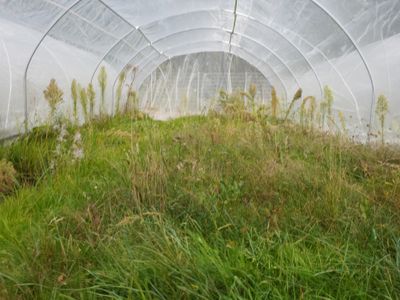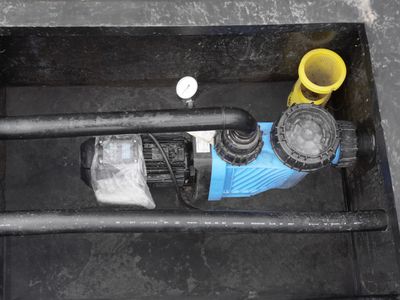
Renaturation of the Queich: A gift for flora and fauna in Landau.

The initial situation
Renaturation is the active restoration of ecosystems to their natural state. However, this does not mean - as one might think - simply leaving an area to its own devices. Restoring ecosystems is complex and usually time-consuming and expensive. However, the effort is worth it in the long term. Renaturation can reduce greenhouse gas emissions, stabilize the water balance and promote biodiversity. As part of the promotion of watercourse development, a pilot project was launched on the River Queich in the Landau urban area in 2017 for precisely this purpose. A second near-natural Queich arm was created and the entire ground surface was planted. In 2020/2021, the city of Landau expanded the project with a research facility to investigate water-land connectivity. The purpose of the facility is to study the interaction between water and land and the effects of changes in water bodies on food webs and flora and fauna under various simulated conditions. To this end, several clay troughs were created through which water from the Queich river flows. This simulation enables precise results to be obtained under controlled conditions that can be transferred to larger river courses.

The implementation
The facility is divided into 16 identical test areas, each covering an area of 15 x 5 meters. In the test areas there is a 0.5-1 meter wide flow trough, which simulates a stream bed and an adjacent flooding area. The water required for the channel system is taken from the adjacent watercourse of the Queich and returned after it has flowed through. The troughs have a five-metre long calming area at the inlet in order to distribute the incoming water jet from the inlet pipe evenly. A net tent separates the simulation fields from the environment and neighboring areas. As the Queich often has very low water levels in the summer months, the system can be operated in recirculation mode during dry periods. For this purpose, pumps are installed in a shaft at the end of each channel, which pump the water through an underground pipeline to the beginning of the channel. To compensate for evaporation losses in recirculation mode, there is a fresh water connection at each channel. The system provides the perfect basis for taking a closer look at processes in a river course and the surrounding environment. The main focus is on the discharge of problematic substances found in water bodies, so-called micropollutants, onto the adjacent dry land. The occurrence and hatching of aquatic insects and the consequences for predatory insects and spiders living on land are also being observed. The effects of climate change on the flora and fauna of water bodies are also being researched. In addition to drought stress, flooding phases and the associated consequences for flora and fauna can also be simulated. These examples clearly show that the research facility offers a wide range of applications for collecting valuable data, both now and in the future.

The quality of the pump technology is crucial to achieving precise results. It must function reliably around the clock. In addition, the pumps must be individually controllable in order to be able to carry out different test series in the individual areas. In SPECK, we have found the ideal partner to meet all these requirements.<<
The technology
The design and function of the system and its operation with natural river water are unique in research. In normal operation, water from the neighboring Queich river is drawn in unfiltered and fed through the flow channels. For this purpose, a BADU Eco Motion from SPECK Pumpen was installed on each channel to pump the water out of the Queich. The pumps run 24 hours a day during the test period of eight to ten months. Each has its own suction and pressure line, so that cross-influences from the extraction points and the pumps are excluded. The decentralized pump system has the advantage that the pumps can be individually controlled and maintained. It was also possible to dispense with a heavy inlet structure directly on the watercourse. The pumps were installed with frequency converters so that the speed can be adapted to the respective requirements. The installed pumps are used without catch baskets so that animals can pass through the pump heads and thus represent a natural colonization of the channels. The organisms can return to the Queich via the outlet from the channels. The hydraulic design and calculation of the system was carried out by SENECT from Landau in close cooperation with SPECK. SENECT control technology is used to monitor the pump performance, switch off and record data on the water quality parameters - water levels, oxygen, pH value and temperature. The system is networked so that all relevant parameters can be read remotely via an app.

SENECT GmbH & Co. KG
SENECT GmbH & CO. KG, based in Landau, is a developer and manufacturer of high-quality technology for fish farming. Its aim is to enable safe, economical, animal-friendly and sustainable aquaculture. To this end, SENECT offers intelligent control technology, low-maintenance sensors, reliable automatic feeders, a wide range of accessories and drum filters specially developed for aquaculture. The high-precision measuring instruments enable customers to accurately record and evaluate important environmental parameters such as soil moisture, temperature, humidity and other relevant parameters. The individual SENECT products can be combined to form high-performance systems so that complete recirculation systems can also be constructed from them in a modular fashion.






